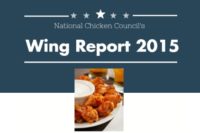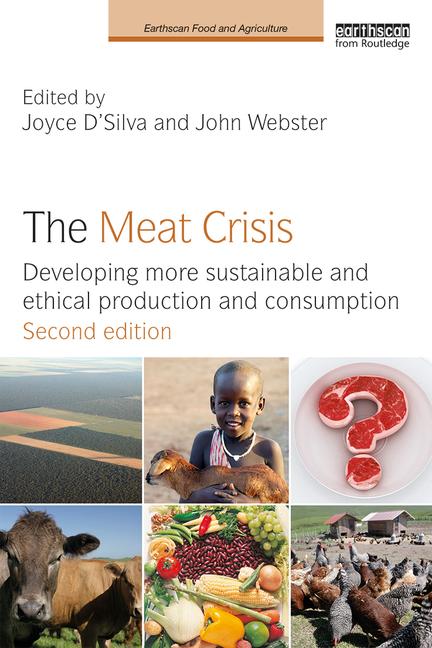Yes, that is 1.3 billion, with a "b." With the second biggest eating day of the year after Thanksgiving upon us – Super Bowl Sunday – there's no hotter time of year for chicken wings, America's new favorite party food.
According to the National Chicken Council's 2016 Wing Report, 1.3 billion wings will be eaten next weekend leading up to and during Super Bowl 50, as fans watch the Carolina Panthers and Denver Broncos battle for the Lombardi Trophy. That figure is up 3%, or 37.5 million wings, from last year's big game.
It comes as no surprise that chicken wings have become a staple on Super Bowl menus as Americans' demand for them continues to soar. Wings recently flew to the top of the rankings of The Today Show's "Super Bowl Snack Bracket,"handing a snack smack-down to nachos, guacamole, salsa, chili and other popular menu items.
Because you've never really thought about that many wings…
- 1.3 billion chicken wings is enough for every man, woman and child in the United States to have four wings each.
- If 1.3 billion wings were laid end to end, they would stretch from Bank of America Stadium in Charlotte, North Carolina to Sports Authority Field at Mile High in Denver almost 53 times.
- That is enough wings to put more than 600 on every seat in all 32 NFL stadiums (Not including London, of course).
- Weighing in at about 162.5 million pounds, 1.3 billion wings weigh 6,325 times more than the combined weights of the Panthers and Broncos entire 52-man rosters.
- If one of the three Power Ball winners spent his/her entire lump sum on chicken wings (which we think they should), they could buy about 123 million lbs of wings, or only 76% of the 1.3 billion wings eaten Super Bowl weekend.
- 1.3 billion wings would stretch 10,468 times from the deepest part of the Marianas Trench in the Pacific Ocean to the surface.
"Any way you measure it, that's a lot of freaking wings," noted Tom Super, senior vice president of communications at the National Chicken Council. Download an infographic of this data by clicking here.
National Chicken Council predicts Panthers' victory
Overall, during the 2016 NFL playoffs, in cities where chicken wings sold higher than their opponent, the city with higher wing sales won 7 of the 10 playoff games, and 4 of the 5 past Super Bowl games. If the same holds true for Super Bowl 50, the Panthers will roll over the Broncos – selling wings at nearly a 3 to 1 pace.
According to market research firm IRIFreshlook, in Charlotte (Panthers), $1,400 of chicken wings are sold for every million dollars of grocery sales. That compares to Denver (Broncos) who sells only $480 dollars per million dollars of grocery sales. (Essentially for every million dollars that goes through the register at grocery, how much of that is chicken wings.)
"It would be nice to see Peyton Manning go out with a victory lap like Elway, but the numbers don't lie," Super said. "Dick's Sporting Goods made their predictionsbased on jersey sales, and although they nailed the Wild Card round, they have the Patriots taking home the Lombardi trophy. So if history holds true, hopefully wing sales will prove to be a better 'scientific method' of predicting the winner. Follow the chicken."
Where will Americans get their wings?
The National Chicken Council estimates that of the wings eaten during the Super Bowl, 75 percent will come from food service outlets and 25 percent from retail grocery stores. According to CHD Expert's foodservice database, Easy2FIND, over 300 new Chicken Wing restaurants opened in 2015, including more than 30 in December 2015.
According to CHD, the top five chicken wing chains in the United States in terms of number of units and market share are Wingstop (44%), Pizza Hut's WingStreet (25%), Hurricane Grill & Wings (6%), Wow Café & Wingery (4%), and Wing Zone (4%). As for Buffalo Wild Wings, their 1,100+ full service restaurants with full bar, are classified as a Bar & Grill, however be assured there are plenty of wings on the menu.
Chicken wings sold at grocery stores and supermarkets skew towards households with three people or more, younger Baby Boomers, Gen Xers, and females 35-54, according to IRI FreshLook Household Panel Data. "Each one of these categories presents an attractive target for retailers," Super noted.
Wing-onomics
The average price (wholesale, not retail) of whole wings is currently about $1.78/lb, down from around $2.oo/lb at the same time last year, according to the Daily Northeast Broiler/Fryer Report by the U.S. Department of Agriculture's Agriculture Marketing Service.
Wing prices traditionally go up in the fourth quarter of the year as restaurants and supermarkets stock up for the Super Bowl, and prices usually peak in January during the run-up to the big game.
"A chicken only has two wings; therefore, the supply of wings is limited by the total number of chickens produced," Super pointed out.
"Chicken production last year was up around four percent, and USDA is predicting another two-plus percent increase in 2016. So an increase in supply, coupled with exports being down, means there are more wings on the market trying to find a home; and hence, at a lower price."
Source: National Chicken Council





